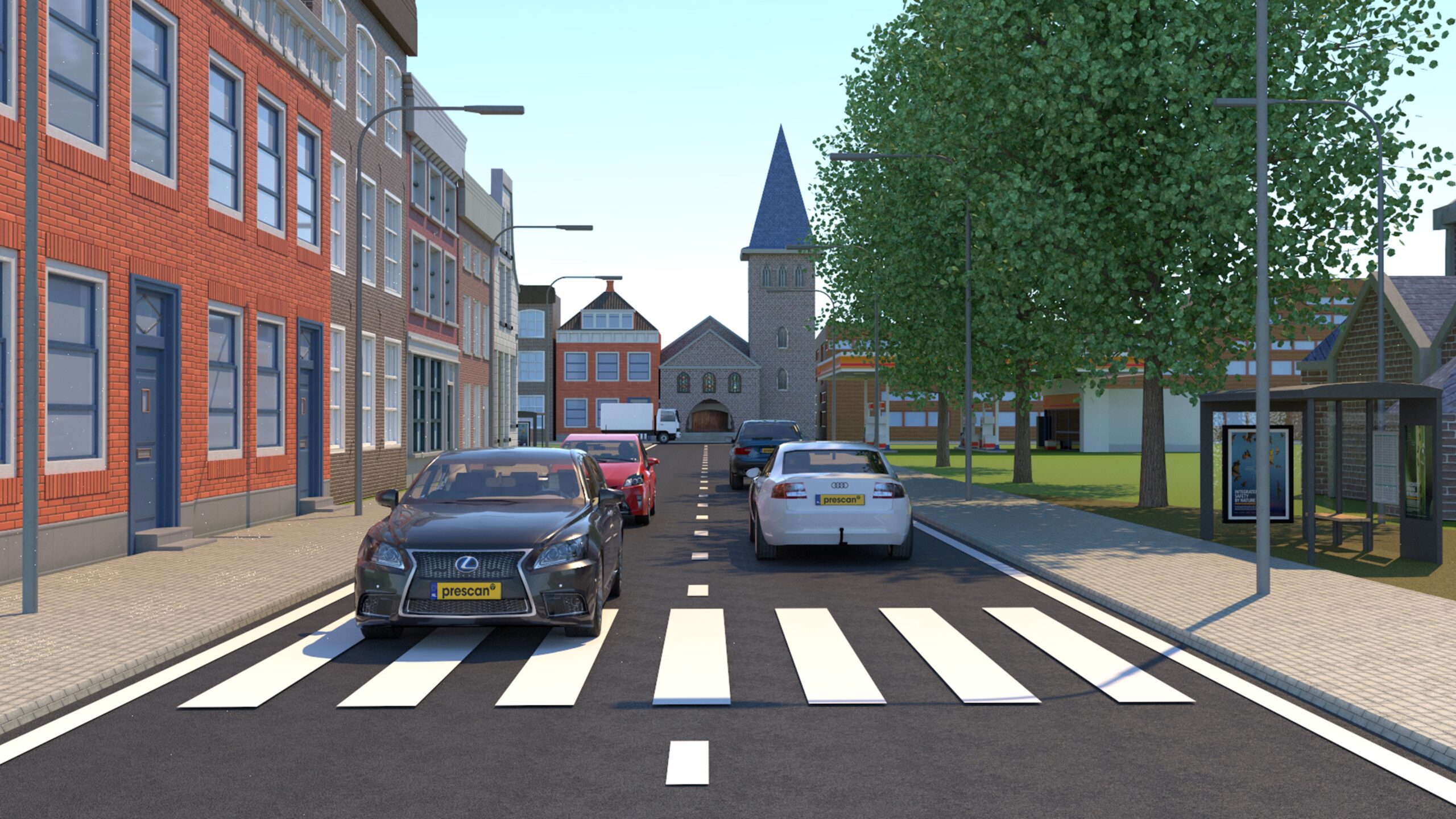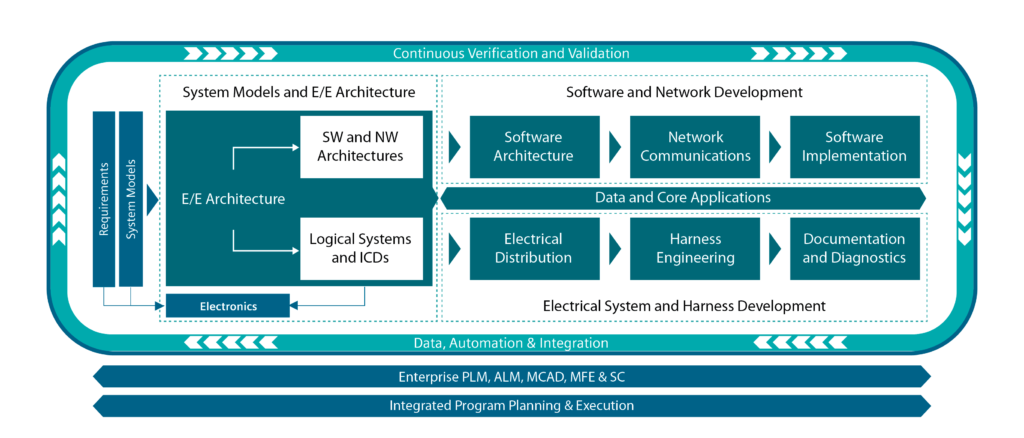Autonomous Vehicle Development from Chip to City (Part 2)


Autonomous vehicle development – Where mobility meets tomorrow
Autonomous vehicles (AVs) combine multiple sensors, computers and communications technologies to ensure safe driving and consistently high-quality passenger experiences. As a result, the future of mobility is becoming increasingly complex. Manufacturers will need to alter the very structure of their design, engineering and verification methodologies to surmount the challenges created by the multi-domain and multi-level complexity of autonomous vehicle development. These companies will need to undergo a digital transformation, embracing the three business imperatives of the comprehensive digital twin, adaptable solutions, and participation in an open ecosystem of collaboration and development.
In the pursuit of AVs, this digitalization must cover a vast breadth of engineering domains and disciplines, including everything from integrated circuit (IC) design to city infrastructure and vehicle deployment. In part one, we examined some advanced semiconductor design and verification solutions. Part two of this blog series covers system-level concerns such as the electrical and electronic (E/E) architecture, the verification and validation of automated driving systems and the deployment of these vehicles in mobility systems. To read part one, which focuses on electronics development and verification, click here.
System-level concerns
AV electrical and electronics (E/E) architectures are reaching unprecedented complexity as hardware and data network content expand. Hardware content will grow 40%, while network data rates will grow from megabits to gigabits per second. Architectural definition is becoming extremely difficult as they must support a greater number of more sophisticated functions and features. Furthermore, vehicle systems are increasingly enabled by a combination of electronics, software and mechanical components.
The cross-domain complexity of AV architectures requires an integrated approach to E/E systems development and lifecycle management. Modern E/E systems engineering software, such as Siemens Capital, delivers model-based development throughout design, manufacture and service of the vehicle’s E/E system (figure 1). These solutions enable rapid architectural iteration and platform trade-off studies to verify and validate E/E integrations. They also empower manufacturers to develop and virtually verify and validate embedded software, vehicle networks and wiring harnesses. Through robust integrations with mechanical CAD and PLM solutions, advanced examples, like Capital, enable collaboration and comprehensive traceability throughout development.

Figure 1: Siemens Capital software enables end-to-end development of electrical and electronic systems, including architectural definition, wiring design and software engineering.
Vehicle-level concerns
At the vehicle level, a holistic perspective is necessary to verify and validate an AV. Simcenter Prescan360 software is an off-the-shelf solution that automates the process of massive model in the loop (MiL) testing within virtual driving scenarios in virtual city environments (figure 2). It features high-fidelity physics-based simulation of vehicle dynamics, sensor inputs and control systems in realistic city and weather conditions.

Simcenter Prescan360 is the core simulation engine for environments, scenarios, sensors, AI and controllers, and its representations contain the reflective properties for radar, camera, lidar and ultrasonic sensors. The sensor models can therefore be scaled from basic information up to full-wave propagation modeling for detailed sensor evaluations. In addition, Prescan360 can input driving and traffic scenarios from a number of sources. There are scenario databases such as GIDAS and CIDAS (German and Chinese accident databases, respectively), which many OEMs and Tier 1s use to record traffic data and generate OpenScenario format descriptions. There are also software solutions to generate scenarios synthetically. Prescan360 has all the common scenario interfaces to support massive simulation in cluster environments, and also real data virtualization interfaces.
Traffic simulation software from Aimsun then connects the vehicle model with the digital twin of an entire mobility system complete with public transit, car sharing and pedestrians that reflect regional behavior differences. Through a partnership with Bentley Systems, highly accurate 3D models of city landscapes can also be generated to incorporate V2V and V2I testing.
AVs in the real world
Siemens also engages in several real-world applications of self-driving cars and provides intelligent infrastructure and cloud services to support the development of AV systems. These applications are being used to deploy and test AVs within realistic or actual urban environments, including the use of V2V and V2I connectivity. For example, shared autonomous mobility systems are under development in Singapore at the Center of Excellence for Testing & Research of Autonomous Vehicles (CETRAN). This deployment includes the use of a mobility operating system that leverages artificial intelligence (AI) to reduce gridlock and control traffic through urban areas.
Likewise, the Hamburg Electric Autonomous Transportation (HEAT) project is using intelligent roadside infrastructure in concert with a suite of onboard sensors to guide its first autonomous shuttle bus through actual traffic on the streets of Hamburg. The intelligent infrastructure will support the minibus with an additional level of information to enable predictive driving, which enhances the efficiency and, most importantly, the safety of the system. In addition, a control center continually monitors the progress of the minibus and can also make driving commands depending on the specific traffic situation. The overall system, comprised of vehicle, roadside infrastructure and control center, ensures a high degree of safety and availability of autonomous operation.
Scope of AV development
The future of mobility requires solutions and experience across the entire spectrum of AV design, engineering and deployment. Connected software solutions help companies create a comprehensive digital twin of AV platforms, including chips, software and control systems. Then, these companies can leverage robust simulation tools to verify and validate AV sub-systems within the context of the individual vehicle, and the vehicle in a virtual city or intelligent mobility system. Connecting this integrated engineering and verification flow with manufacturing and vehicles in the field closes the loop on a complete AV solution.
Xcelerator portfolio
Siemens Digital Industries Software, with it’s Xcelerator portfolio and wealth of real-world AV experience, is an ideal partner with which to pursue autonomous, connected and shared mobility. The solutions within the Xcelerator portfolio support the most comprehensive digital twin in the industry, while remaining adaptable to the needs of each customer. Finally, through robust partnerships, Siemens is a central participant in the budding global mobility ecosystem.
This is where mobility meets tomorrow.
About the author: Matthieu Worm drives the program for the ADAS and autonomous driving domain within the Simulation and Test Solutions group of Siemens Digital Industries Software. He has brought coherency and consistency in the Simcenter solution portfolio for autonomous vehicle development and autonomous systems and continues to work on the integration, extension and deepening of the offering.


